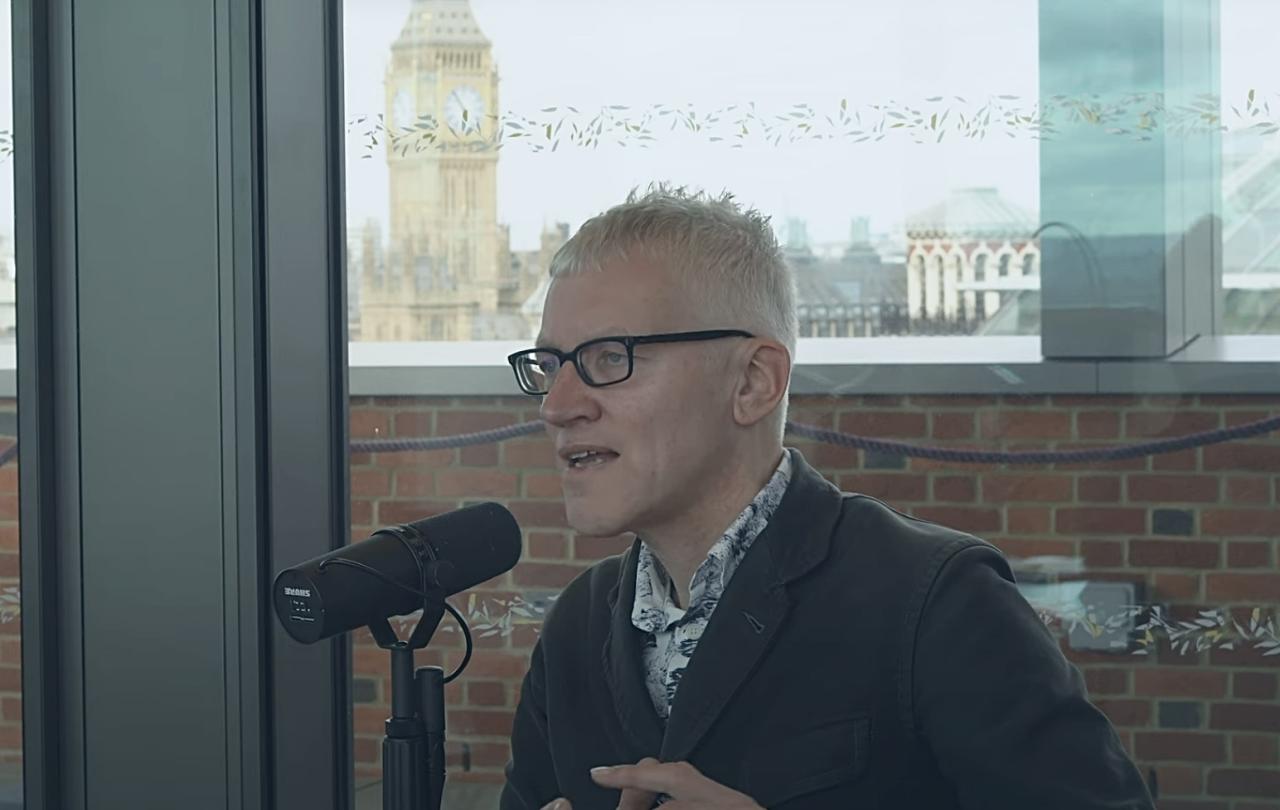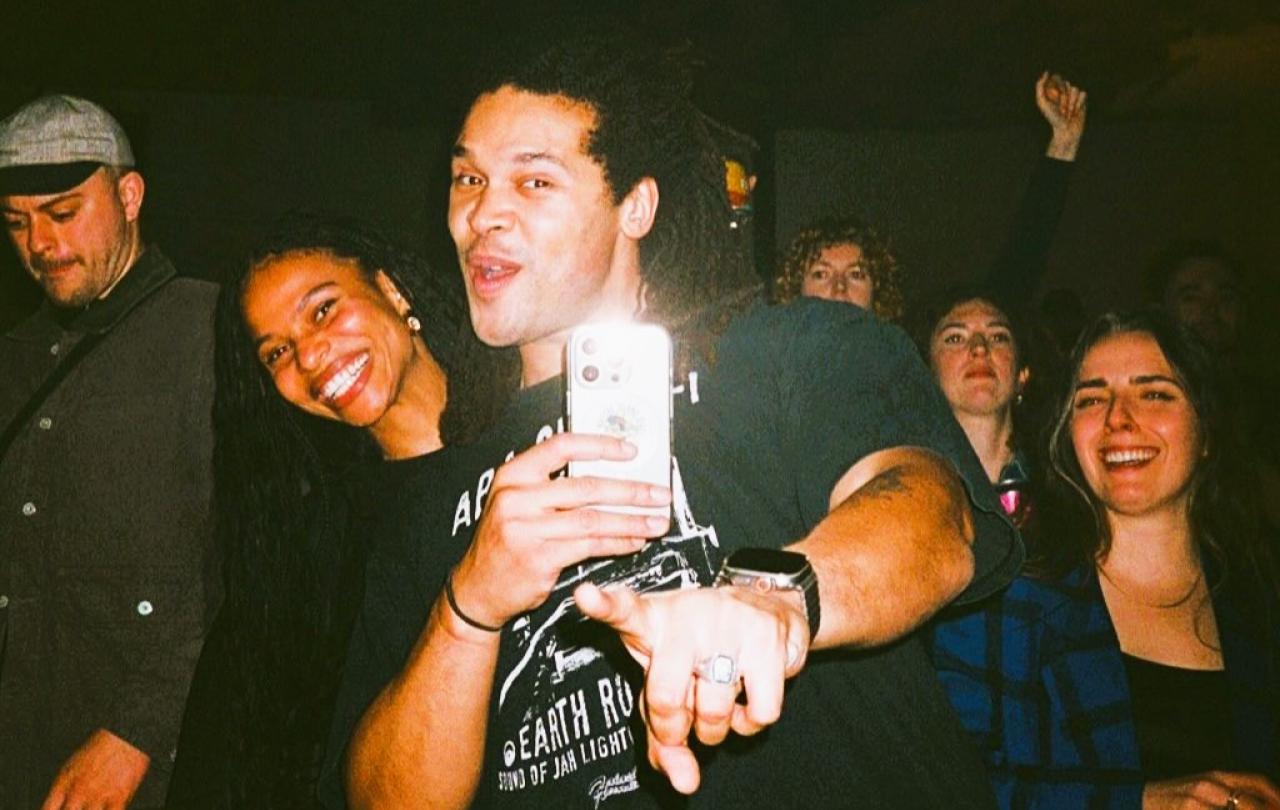
In a festive one-off, two worlds have collided. Tom Holland, of the beloved 'The Rest is History' podcast, has joined Rory Stewart and Alistair Campbell in their 'The Rest is Politics' parallel universe. They spend a merry hour talking through religion, politics and the way in which they have both shaped our modern world... plus dinosaurs, always dinosaurs.
And it got me reminiscing - my mind drifted back to earlier in this slightly odd year, on the eve of the coronation, when we had the one and only Tom Holland on our podcast. We called that episode of the podcast - Re-Enchanting History and the Coronation - but for me, it could just as aptly be entitled Re-Enchanting the Weird.
Below is a reflection that I wrote immediately after that fascinating episode was recorded. If you've enjoyed his appearance on The Rest is Politics, you may just enjoy his appearance here too.
Listen now
Watch now
Re-Enchanting the Weird
Let me start in the proper place, with introductions.
If you are a fan of history, Tom needs no introduction. But, for those of you who are not yet acquainted with his wonderfully infectious expertise, Tom is the co-host of the beloved podcast, The Rest is History (alongside Dominic Sandbrook). He is also the best-selling author of Rubicon, Persian Fire, Dominion, and the up-coming book for children, The Wolf-Girl, The Greeks, and The Gods. Justin Brierley and I recently had the pleasure of soaking up a little of Tom’s extensive knowledge when we interviewed him for a Coronation special of Seen and Unseen’s Re-Enchanting podcast.
Tom’s most recent book, Dominion, charts the mighty impact that the Christian revolution has had; beginning with its unexpected origins and following its cultural reverberations through to the present age, highlighting its very present influence. We are, to borrow Tom’s own phrase, a society of goldfish who are (perhaps unknowingly) swimming in a distinctly Christian fishbowl. And so, our conversation began there – as he pointed out that, like it or not, the West operates in the residue of the Christian revolution. Christianity has been hidden in plain sight all along. For the sake of eloquence, I’ll let Tom explain:
‘The conceit of the West is that it’s transcended Christianity to become purely universal, purely global. But its values, its assumptions, its ethics remain palpably bred of the marrow of Christianity’.
Throughout our conversation, Tom took us on a whistle-stop tour of what was, what is, and the thread that can be drawn between the two. And while I don’t wish to spoil things for you, I imagine you can guess what the thread is. This conversation touches upon the origins of democracy (as we perceive it), the Reformation and the Nazis, to name but a few. I couldn’t recommend it enough. But I must warn you, you cannot un-hear Tom’s observations. The things he points out, you simply cannot un-see. Christianity will no longer be hidden; it will just be in plain sight.
Seen as it is within in touching distance, we also wanted to get Tom’s thoughts on the Coronation. And this is where the re-enchantment of the weird began. At least, for me.
The very notion of this upcoming Coronation is odd. It is a distinctly peculiar event.
Firstly, it is incredibly old. We are the only country in the world that still does this particular thing in this particular way. What we will see unfold before us is derived from the 10th Century, when King Edgar was coronated by St. Dunstan, and yet it goes back further still - its roots actually lie in Bronze Age Israel.
During the Coronation, the ancient and the modern will converge. As spectators, we will be peeking into times gone by; as Tom (rather excitedly) said, watching this ceremony, and everything that will surround it, will be like ‘seeing a dinosaur… still alive… in a zoo’. I wrote that last week’s conversation with astrophysicist, Dr. Jennifer Wiseman, made me feel small – small in time and small in place. Well, in many ways, so did Tom’s thoughts on the Coronation. The ritual is so very old, and we, so very young.
But there is more. Tom reminded us that the Coronation is not only old, it’s weird. It places the mystical, the supernatural, the sacred, and the down-right strange on centre stage.
Nick Cave, who will be sitting in Westminster Abbey on the day despite not being much of a royalist, explained that he accepted the invitation purely because of its bewildering oddness. In his Red Hand Files, he wrote
‘what I am also not is so spectacularly incurious about the world and the way it works, so ideologically captured, so damn grouchy, as to refuse an invitation to what will more than likely be the most important historical event in the UK of our age. Not just the most important, but the strangest, the weirdest.’
Both Nick Cave and Tom Holland have allowed themselves the fun of being curious. Curious about the fact that something profoundly supernatural is about to be taken incredibly seriously in the heart of a so-called secular society. And whatever pragmatic questions I may have about the place of monarchy in the here and now, I think I will allow myself the fun of being curious about that too.
My conversation with Tom re-enchanted the parts of Christianity that, as someone who grew up as a Christian, I used to be quite embarrassed by. Namely, the weirdest parts.
As a teenager, my instinct was to minimise (at least in public) the aspects of the Christian faith that cannot be explained by rationalism. I used to keep quiet about the parts of my faith that outed me as someone who believed in things that are supernatural. I would try my absolute best to blur the details of the most obscure facets of Christian thinking. But, as Tom said, ‘a Christianity that has bled itself of enchantment is a pallid thing.’ And if there is one thing that the whole Jesus movement was not, it’s pallid.
If you, like Tom Holland, crave enchantment, this episode will be for you. Afterall, what better place to go looking for the wonderfully weird than in the ‘greatest story ever told’?





